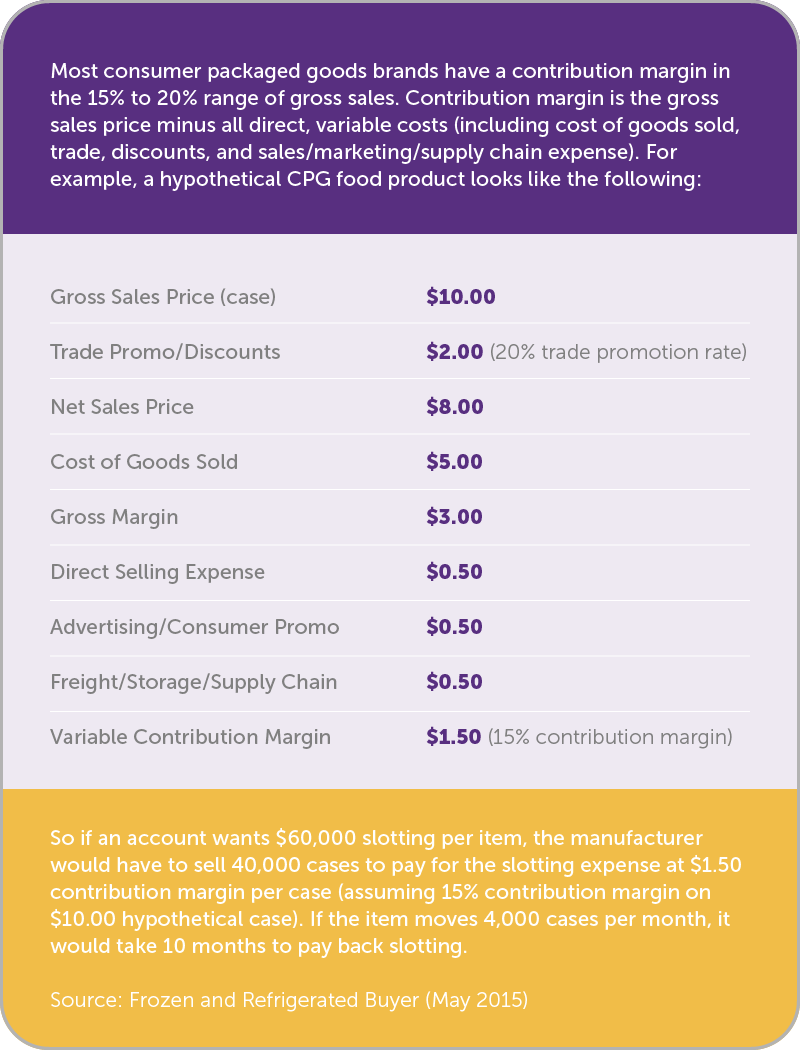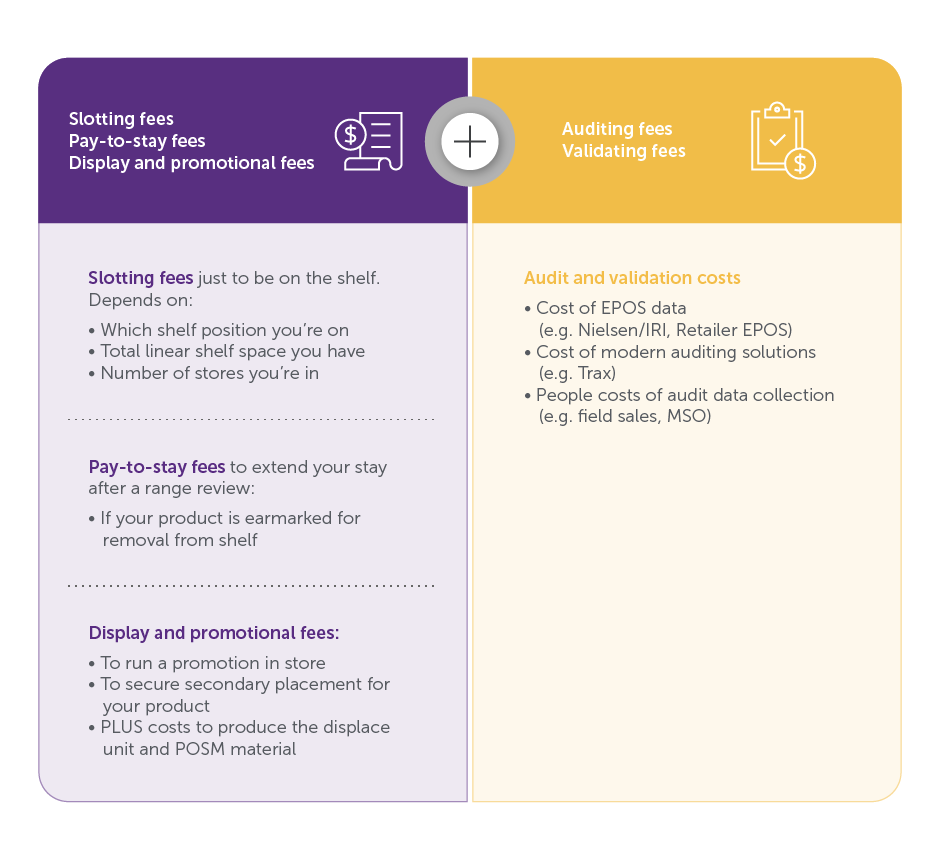A quick guide to shelf space costs
Shelf space is a hot commodity, and CPG companies often incur substantial costs to get their products in-store, secure premium placement, and run promotions. It’s critical that CPGs get the standard of execution they pay for. More importantly, they must be able to accurately evaluate if the rewards, in terms of incremental sales, outweigh these costs.
An insider’s guide to retail shelf space fees
The ever-growing portfolio of brands and high competition for shelf space allows retailers to command considerable shelf space fees. There have been numerous arguments about whether the fees charged actually enhance space allocation efficiency or encourage backroom deals between stores and manufacturers that promote monopoly. But as it stands today, these are the broad types of costs incurred by manufacturers:
- Slotting/listing fees: Slotting fees (or listing fee) is the amount of money a manufacturer pays a retailer to appear on the shelves. This transaction typically takes place after a range review process once the retailer is convinced about a product’s potential to generates sales and profit. Slotting fees average $1500 per store per SKU. If you consider that a range review may introduce 7-12 new SKUs, listing these products in a 1000-store retail chain nationwide has a huge impact on a CPG’s bottom line. Note that simply paying slotting fees won’t drive sales if you don’t ensure shelf availability at all times.
- Pay-to-stay fees: These fees are paid by CPGs during category reviews in the form of discounts or free cases of products to the retailer. Typically, it is offered to ensure that SKUs that have been flagged for removal from shelf, stay. This may mean that the manufacturer needs to reactivate their shopper marketing activities to spur purchase decisions at shelf.
- Display placement: Stores also charge significant fees for seasonal features and the promotional displays that appear at the end of aisles. A manufacturer may pay $350 – 500 per display per store. The fee varies depending on the product, e.g. higher for specialty, or choice of secondary placement, e.g. placing crackers far away from the snacks category (perhaps closer to beverages). The main aim of this is to introduce the brand to new shoppers. So, the ROI of this fee is diluted if regular shoppers purchase the brand, or if the product was bought at the home shelf.
Here’s an explanation of the finance of promotion and slotting in frozen foods, courtesy Kevin Janiga, President of Winsights Marketing.

Combine these fees with auditing and data costs, and you get a sense of the what the manufacturer pays to be in a retailer.

Measuring ROI to justify spend on shelf space costs
In order to achieve the right return on investment (ROI) on these costs, CPGs must ensure that they get the space they paid for – and that this space is actually maximizing sales, and that shelving principles are property executed in store.
A short-to-midterm evaluation cycle analyzing various micro and macro drivers of sales performance is necessary for companies looking to measure return on shelf related costs:
- Short-term ROI evaluation (one to four weeks): This focuses on secondary placements and promotional sites, with CPGs tasked with carefully monitoring on-shelf availability of their products and promotion compliance.
- Medium-term ROI evaluation (six to 12-month window): The focus here shifts primarily to the regular stock location in store. The goal is to understand the cost of lost sales due to shelf gaps, how much incremental income the listing fee has generated, and if competitors have eaten into your brand sales.
Trustworthy shelf data: The main hurdle to ROI measurement
But all too often, many CPG companies don’t get the right distribution on new items at key accounts. In terms of display compliance and shelf placement, there is little objective data available to manufacturers to truly know which retailer is executing well, and who isn’t.
With relevant and accurate data, CPGs can quickly learn if the cost of doing business with a specific retailer will return sufficient sales growth.
In the next blog, we’ll find out how CPGs can use granular, store and SKU-level in-store execution data as powerful evidence to enrich ongoing conversations with retailers, allowing your sales team to successfully negotiate space allocation, product placement and associated fees.



